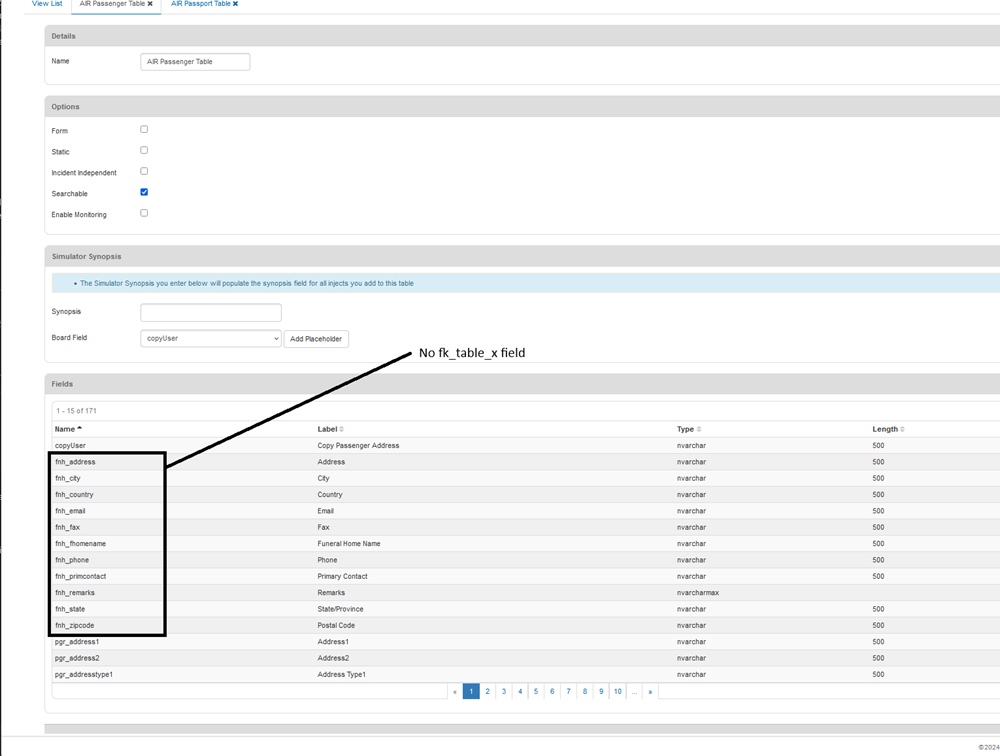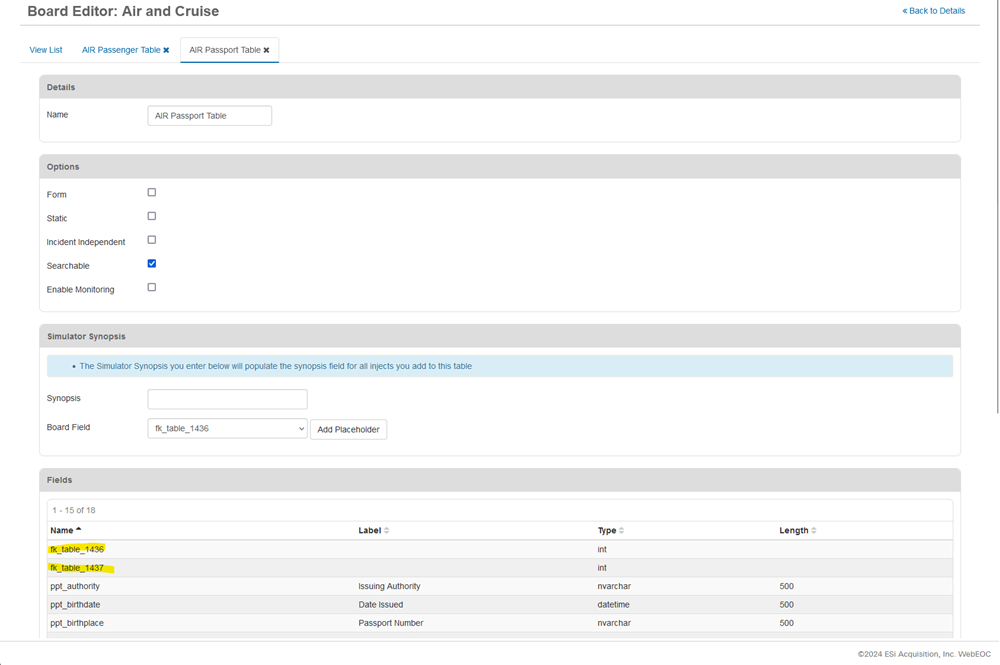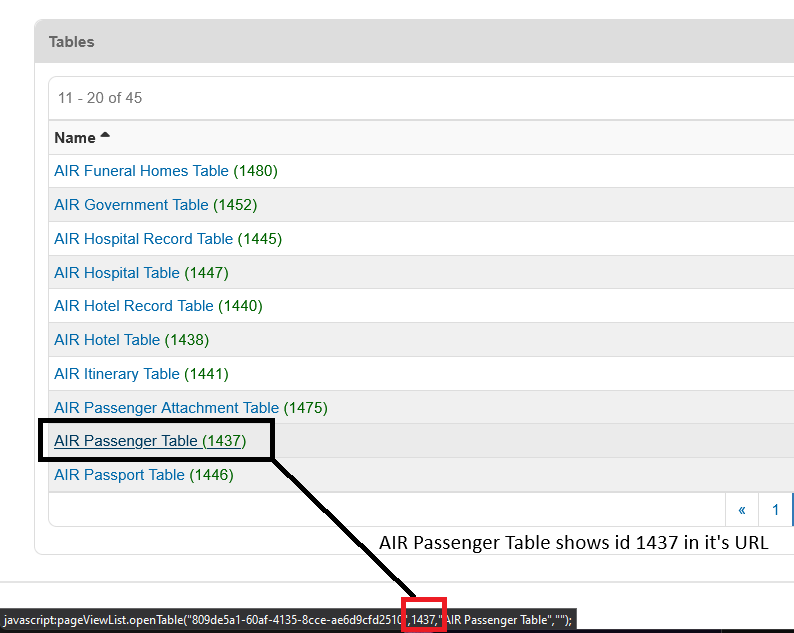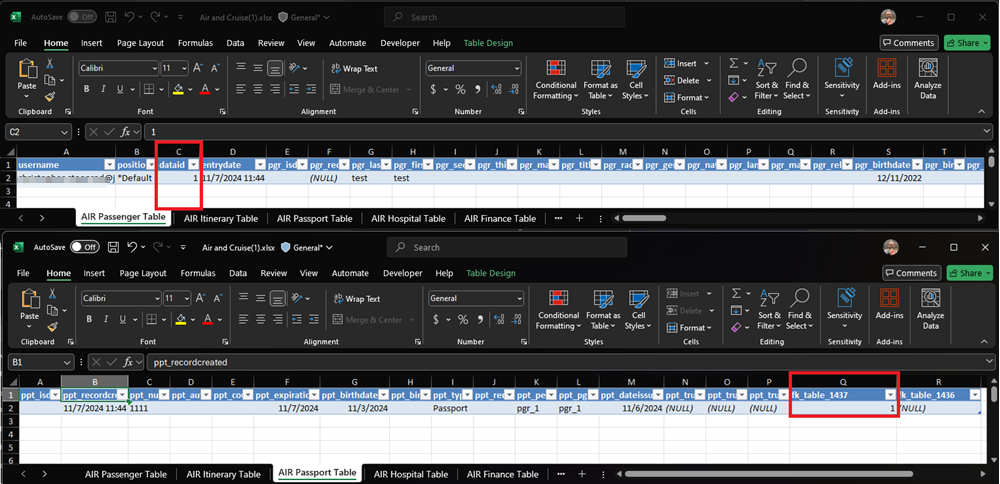Import Parent and Child Tables in the Board Data Manager
Using the Board Data Manager, you can import related data while maintaining the relationship of data among multiple tables.
You must prepare the file before importing it.
Prepare the Import File
When preparing your file for import, you must:
The screenshots in the following examples use the AIR Passenger table, AIR Itinerary table, and AIR Passport table, but these steps can be applied to all boards and tables.
Identify parent tables
Parent tables do not have fk_table_x fields in their WebEOC Nexus table structure.

Identify child tables
A child table has one or more parent tables.
Child tables have an fk_table_x field in their WebEOC Nexus table structure. This fk_table_x field, where x is the unique table ID of the parent table, identifies each parent table.

Confirm parent table IDs
Confirm which parent IDs are relevant by referring to the child tables to be mapped.
In the case of the AIR Passport table in the example, there are two fk_table fields: fk_table_1436 and fk_table_1437.
To confirm the parent table IDs, navigate to your WebEOC Nexus Board Editor, hover your cursor over the table name in your list, and identify the ID number in the link URL at the bottom of the page.

In the screenshot above, fk_table_1437 is the AIR Passenger parent table for this example.
Confirm that the file you are importing contains the desired parent table (in this case, the AIR Passenger table) and that this table contains a dataid field. The dataid field serves as a unique identifier that the child records use to ensure they are mapped to the correct parent record. The dataid field must be a unique number and must appear once. In this example, the dataid field is 1437.
Confirm that the file you are importing contains an fk_table_x column for each child table, and that this column is correctly linked to the parent table included in this file. For this example, this column is fk_table_1437. This fk_table_x column must contain a value that matches the dataid of the associated parent record (the AIR Passenger table) being mapped.
While you must ensure that at least one fk_table_x value is mapped, you do not need to map all fk_table_x values in the child tables. In this example, the fk_table_1436 is a parent table that is not used or mapped.
If the fk_table_x value in the child table is blank, null, or set to a value that doesn't exist as a dataid in the parent table, the child table record is imported; however, it will not have a valid association to a parent record and will not be visible within the board. This record will be created as an orphaned record upon import.

Import the File
To import the file
-
In the main menu, click the workflows icon
 . The Workflows page opens.
. The Workflows page opens. -
On the Boards tab, select the board name.
-
Select Import/Export Board.
-
Select Choose File, select your import file, and click Import.
-
In the Import Map: [Board Name] page, for Table Name, select the appropriate table to import to.
-
For the parent table(s), ensure that all headers have been mapped. Headers marked as Unused are skipped during the import process.
-
For the child table(s), ensure that the fk_table_x value has the correct dataid (table_name) field selected in its header. This step creates the association between parent and child records. In the example, the fk_table_1437 column in the child table is mapped to the dataid (AIR Passenger table) header value. Perform this step for all child tables included in the import file.
-
Click Preview to preview your import settings. If the import preview is incorrect, cancel the import and review and edit the import file and import map settings.
-
After the preview looks correct, click Import and allow the import to process.
-
After the import completes, the parent and child records display on your board.

